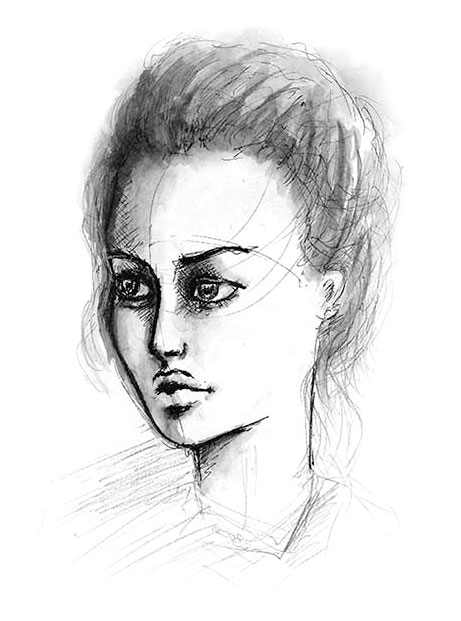Benefits
Long-Lasting Rejuvenation
Unlike injectables that require ongoing maintenance, a facelift provides a more permanent solution to facial aging. Results can last a decade or more, making it one of the most effective investments in your appearance.
Comprehensive Facial Tightening
A facelift addresses multiple concerns in one procedure—sagging skin, prominent jowls, nasolabial folds, and loss of facial architecture. By lifting and repositioning the deep tissues, Dr. Neavin restores youthful contours throughout your face and neck.
Natural-Looking Results
Dr. Neavin's expertise in SMAS manipulation ensures your results look refreshed, not "pulled" or artificial. The goal is for people to notice you look great—not that you've had work done.
Discreet, Well-Hidden Scars
Incisions are strategically placed within the natural contours of your face, hairline, and behind the ears. Once healed, scars are subtle and virtually undetectable.
Expected Results
A Refreshed, Youthful Appearance
A facelift restores the youthful contours you once had by lifting sagging tissues and smoothing deeper wrinkles. You'll look like a rejuvenated version of yourself—not like someone else.
Improved Facial Definition
Jowling softens, the jawline becomes more defined, and the transition from face to neck is restored. The overall effect is a tighter, more sculpted facial profile.
Reduced Wrinkles
While a facelift won't eliminate every fine line, it dramatically reduces the appearance of deeper creases, nasolabial folds, and marionette lines for a smoother complexion.
5-Star Experiences
I was nervous about looking 'done,' but Dr. Neavin completely put my mind at ease. He listened to exactly what I wanted and delivered results that look so natural—my friends just say I look rested and refreshed. I wish I had done this years ago.
"From the consultation to recovery, Dr. Neavin and his team made me feel comfortable every step of the way. I'm six months post-op now and I can't stop looking in the mirror. I finally see the me I remember."
Types of Facelifts
01 Mini Facelift
02 SMAS Facelift
03 Traditional Facelift
04 Neck Lift
Candidates
Ideal Candidates
The best facelift candidates are adults in their 40s, 50s, and 60s who are in good overall health and have realistic expectations about their results. A facelift is ideal for patients experiencing:
- Prominent jowling along the jawline
- Deep nasolabial folds and marionette lines
- Sagging skin and tissue laxity in the face and neck
- Changes in cheek fat distribution and volume loss
- Double chin or excess skin beneath the chin
- Facial dimpling and loss of facial architecture
If non-surgical treatments like fillers and Botox are no longer delivering the results you want, a facelift may be the comprehensive solution you’re looking for.
Not Ideal Candidates
A facelift may not be recommended for patients who:
- Take blood-thinning medications or have a blood clotting disorder
- Are heavy smokers who would struggle with cessation
- Have a serious heart or lung condition
- Have hypertension (high blood pressure)
- Have poorly controlled diabetes
- Have unrealistic expectations of results
During your consultation, Dr. Neavin will review your medical history and discuss whether a facelift is the right option for you.
Find Your Ideal Facelift
Answer a few questions to discover which technique aligns with your anatomy and goals.
What is your primary concern?
How would you describe your neck?
Have you noticed volume loss?
Recovery Preference?
Surgery Day Journey
Arrival & Preparation
Anesthesia & Incisions
Lifting & Repositioning
Comprehensive
Aftercare Support
Personalized Recovery Plan
Follow-Up Appointments
Direct Access to Dr. Neavin
Healing Timeline
Every patient heals differently, but this timeline offers a general guide for your return to daily life.
Week 1: Initial Healing
Rest is essential during this phase. You'll experience swelling and bruising, and pain medication will be prescribed to manage any discomfort. Avoid strenuous activity and sun exposure. Keep your head elevated and follow all post-operative care instructions closely.
Weeks 2–4: Swelling Subsides
Most swelling and bruising will begin to subside during this period. Many patients feel comfortable returning to light daily activities and non-strenuous work. You'll start to see early improvements in your facial contours, though some residual swelling may remain.
Months 1–3: Continued Improvement
Your face will continue to settle into its new position as tissues heal internally. Incision lines will begin to fade and blend with your natural skin. Most patients feel confident resuming normal social and professional activities during this time.
Months 3–6: Final Results
By this stage, you'll see the full results of your facelift. Swelling is completely resolved, tissues have settled, and incision lines continue to soften. Your refreshed, rejuvenated appearance is now fully realized and can last a decade or longer with proper skincare and sun protection.
Safety &
Potential Risks
When performed by a skilled, board-certified plastic surgeon like Dr. Neavin, facelift surgery is considered safe with a low rate of complications. However, as with any surgical procedure, there are potential risks to be aware of.
Dr. Neavin prioritizes patient safety above all else. During your consultation, he will thoroughly evaluate your facial structure, review your medical history, discuss potential risks and benefits, and create a customized treatment plan tailored to your specific needs.
Important Considerations
- Infection and bleeding – These occur in less than 10% of cases and are typically managed with standard post-operative care.
- Hematoma – A fluid collection that may form beneath the skin flap. In most cases, this can be resolved by draining the fluid with a needle. Reopening the incision for drainage is extremely rare.
- Nerve damage – In rare cases, there is potential for temporary or permanent damage to nerves responsible for facial expressions such as smiling or raising the eyebrows.
- Scarring – While incisions are strategically placed to minimize visibility, individual healing varies.
- Anesthesia risks – As with any procedure performed under general anesthesia, there are inherent risks that will be discussed during your consultation.
Frequently Asked Questions
How natural will my face look after a facelift?
How long after a facelift will I see results?
What happens to my wrinkles after a facelift?
How long do facelift results last?
Can a facelift treat forehead lines and sagging eyebrows?

Artistry Meets
Surgical Precision
Dr. Tim Neavin has spent over 20 years perfecting the art of facial rejuvenation. Trained under world-renowned Beverly Hills surgeons, he’s performed thousands of facelifts—and his patients consistently say the same thing: they finally look like themselves again.
His technique goes beyond skin-deep. By lifting the deeper facial structures and restoring lost volume with fat transfer, Dr. Neavin creates results that are natural, balanced, and built to last. No pulled look. No telltale signs. Just you—refreshed.
Recognized as a Top 10 Plastic Surgeon in California, Dr. Neavin is as honest as he is skilled. He’ll tell you what will work, what won’t and deliver exactly what he promises.
Beverly Hills & Santa Barbara
Start Your Transformation
Schedule your private consultation with Dr. Neavin today.

